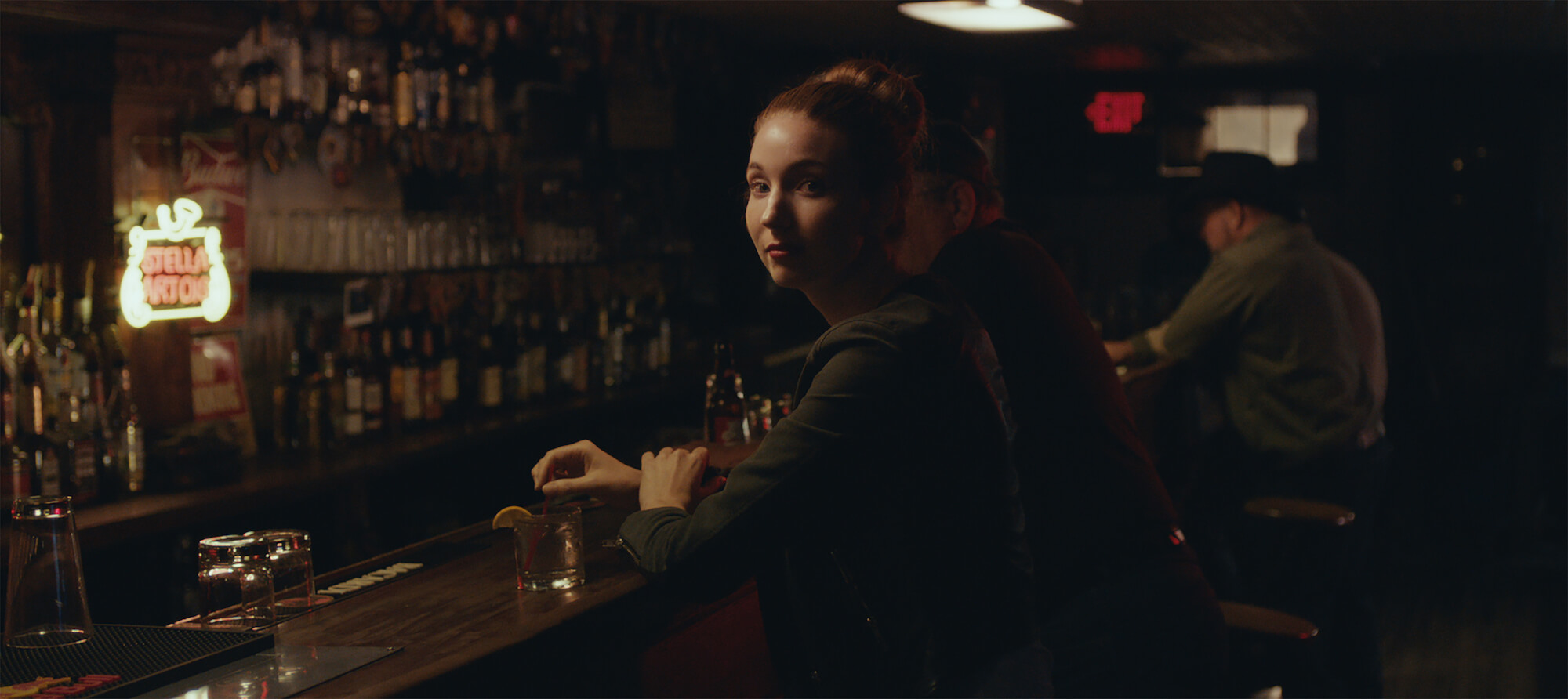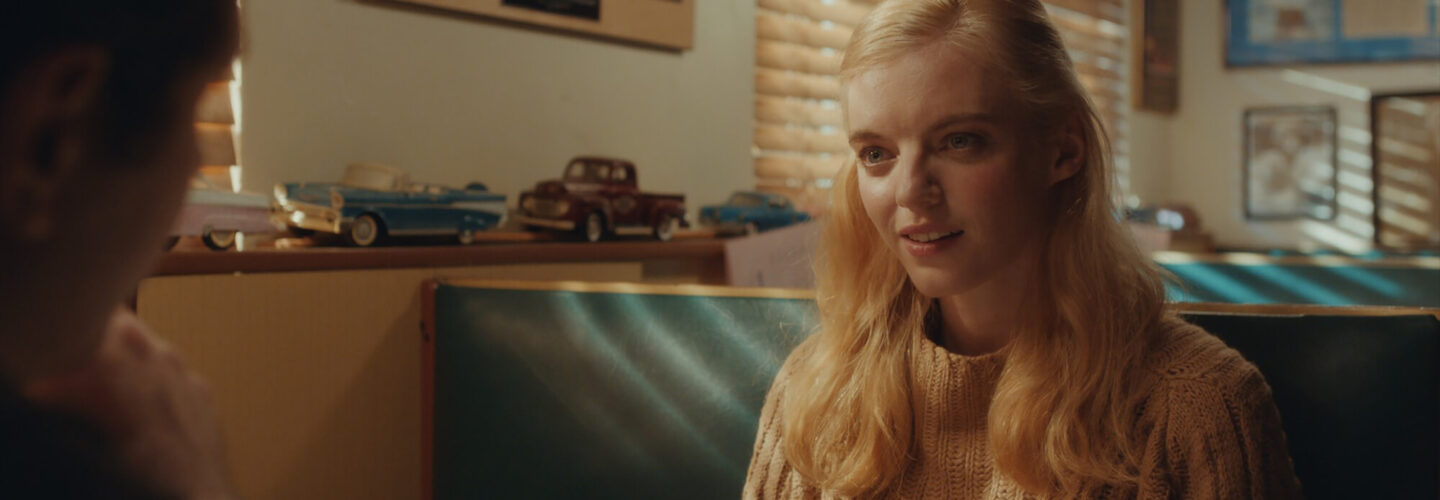
One of the most exciting components of Tsubasa Matsumoto’s existential drama Prelude is its ponderous nature. It’s not afraid to speculate and throw ideas around surrounding the human condition. Specifically, Matsumoto suggests that it is our interactions with each other that define our existence. He presents this thesis through the intimate setup of a couple discussing their lack of physical individuality, noting how their actions are likely being simultaneously performed by many others all across the world at that very moment. Matsumoto then casts his vision back to the origins of human existence and the film’s true expansive nature takes hold. It’s an eye-opening example of how to tackle lofty ideas on a small budget which DN is delighted to premiere here today alongside a chat we conducted with Matsumoto where he discusses the thought-provoking concepts of Prelude, the intention to shoot the film with an eye for the big screen, and the delayed yet overwhelming festival premiere at Tribeca 2021.
The concept of Prelude is fairly expansive, to say the least, what were you drawing from when you developed it?
The co-writer and my childhood friend Koji Enomoto remembered a story our middle school teacher told us: there were at least three people thinking the same thing we did and doing the same thing we did at any given moment in time. But, we believed that interacting with other people is what makes you special. So, we wanted to make a film about everyone’s first interaction, a sperm falling in love with an egg. That’s how we came up with the initial concept.
How did you work the broadness of the initial concept into a script, was it a case of narrowing down the ideas into specific scenarios, i.e a couple discussing at a diner/the birth of a child, etc.?
We love using metaphors and hidden meanings in movies. So, we wanted to use a couple as a personification of sperm and egg and wanted the audience to figure that out. We chose the diner as the main location because the whole story takes a place in a mother’s uterus and we wanted a surreal location. Diners are very surreal places to me. Every diner has a quirky regular customer, time passes differently in it and maybe because I was not born in the U.S., it’s such a magical place to me. We love the theme “Birth” and we wanted the climax to be the birth of a child.

One of the things that struck me was the ambition in the scope of Prelude yet how intimate it is. When it came to shooting, did you have an idea how you wanted the film to look, cinematically?
We shot on Alexa XT with Zeiss Ultra Primes rented from ARRI CSC and some of the pickup scenes were shot on RED Scarlet W. It was an ambitious project for young filmmakers like us and we couldn’t have done it without ARRI CSC’s support. It was almost impossible to fit the G&E equipment the DP and the gaffer wanted within our budget. So, the DP Jens Victor was taking out an inky, flags and other small units from the list to fit the budget when we were checking out the equipment. Eventually, I think the rental house felt empathy and met with our budget without changing our wishlist. I am still very thankful for that.
We wanted to make a film about everyone’s first interaction, a sperm falling in love with an egg. That’s how we came up with the initial concept.
I imagine a lot of time went into both creating the concept but also assembling the film in post, how long did everything take from start to finish?
Prelude was a long project. The script took a year to write, and we spent two weeks filming principal photography in September 2017. After raising additional funds on Kickstarter, we went into post-production. However, my artist visa was denied in 2018 and I had to leave NYC and move back to Tokyo before we completed the film. I was devastated. That delayed the post-production because I had to do everything remotely. Eventually, we finished the film in mid-2019 and started submitting it for film festivals.


Speaking of film festivals you initially got into Tribeca for a premiere, right? That must’ve been an amazing experience.
I was so happy when the film got into Tribeca Film Festival 2020, but then shit hit the fan. The festival was postponed with the pandemic and the film eventually premiered on June 12th, 2021 at Tribeca Film Festival 2021. I was speechless to finally watch the film on the big screen for the first time. Like everyone else, I love watching films in theatres and it was very important to me that the film look great on big screens. When we were filming we composited the shots making sure they would look amazing on big screens and not just through the viewfinder.
What was it specifically that you were doing to compose the film for the big screen experience?
I feel that you can experience some movies a lot better on the big screen with a proper audio system. Some movies are not so different whether you watch them on a big screen or on a small TV screen. I think the difference is the way the camera moves, how meticulous the production design and the compositions are because you can see more details on the big screen. For example, CUs of Marion’s (played by Jessica Park) face with the gorgeous light and detailed production design in the background at the diner or the Steadicam shot of a ball at the old bowling alley look so much better on the big screen. It’s unfortunate that you can’t experience this online, but the music and sound were mixed in 5.1 channels for the surrounding sound experience.



How much planning goes into a film like Prelude? Given the cuts to other characters performing similar actions in addition to the mixture of locations, was it a process of storyboarding heavily to get a sense of how the film would play out?
I believe pre-production is probably the most important stage of filmmaking, but I’m actually really bad at drawing storyboards. However, the DP, production designer, producers and I went on a location scout for I think 14 days to plan in detail at the locations. Jens decided the shots using Cadrage, a director’s viewfinder app on iPhone and made sure they would cut smoothly. I had a meeting with the VFX artist before we shot the film to ensure the visuals we were trying to execute were possible and also to know what we should have in mind on set for the post-production team later on.
When we were filming we composited the shots making sure they would look amazing on big screens and not just through the viewfinder.
What are you working on next?
Koji and I are developing a script about how human emotions are created and then influence the choices we make. The story takes a place in the primordial garden of Eden, and we based it on psychologist Plutchik’s wheel of emotion theory.


